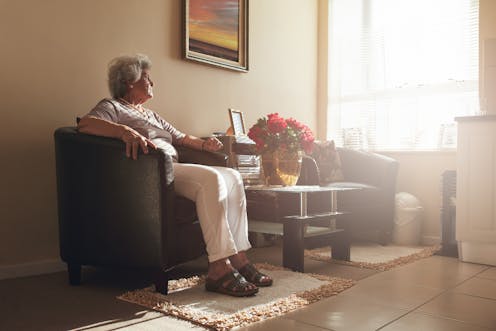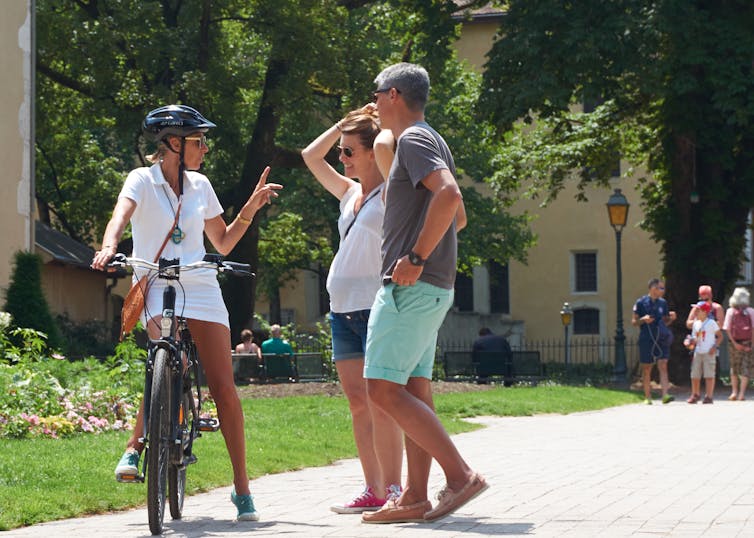
If you’re feeling lonely, you’re not alone. Loneliness is an increasingly common experience, and it can have severe consequences. People who feel lonely are at higher risk of serious health issues, including heart disease, immune deficiency and depression.
Traditionally, loneliness has been viewed as an individual problem requiring individual solutions, such as psychological therapy or medication. Yet loneliness is caused by feeling disconnected from society. It therefore makes sense that treatments for loneliness should focus on the things that help us make these broader connections.
The places where we live, work and play, for example, can promote meaningful social interactions and help us build a sense of connection. Careful planning and management of these places can create population-wide improvements in loneliness.
Our research team is investigating how the way we design and plan our cities impacts loneliness. We have just published a systematic review of research from around the world. Overall, we found many aspects of the built environment affect loneliness.
However, no single design attribute can protect everyone against loneliness. Places can provide opportunities for social interactions, or present barriers to them. Yet every individual responds differently to these opportunities and barriers.
Read more: 4 ways we can recover from the loneliness of the COVID pandemic
What did the review look at?
Our review involved screening over 7,000 published studies covering fields such as psychology, public health and urban planning. We included 57 studies that directly examined the relationship between loneliness and the built environment. These studies covered wide-ranging aspects from neighbourhood design, housing conditions and public spaces to transport infrastructure and natural spaces.
The research shows built environments can present people with options to do the things we know help reduce loneliness. Examples include chatting to the people in your street or neighbourhood or attending a community event.
Read more: Many people feel lonely in the city, but perhaps 'third places' can help with that
However, the link between the built environment and loneliness is complex. Our review found possibilities for social interaction depend on both structural and individual factors. In other words, individual outcomes depend on what the design of a space enables a person to do as well as on whether, and how, that person takes advantage of that design.
Specifically, we identified some key aspects of the built environment that can help people make connections. These include housing design, transport systems and the distribution and design of open and natural spaces.
So what sort of situations are we talking about?
Living in small apartments, for example can increase loneliness. For some people, this is because the smaller space reduces their ability to have people over for dinner. Others who live in poorly maintained housing report similar experiences.
More universally, living in areas with good access to community centres and natural spaces helps people make social connections. These spaces allow for both planned and unexpected social interactions.
Read more: 1 in 4 Australians is lonely. Quality green spaces in our cities offer a solution
Living in environments with good access to destinations and transport options also protects against loneliness. In particular, it benefits individuals who are able to use active transport (walking and cycling) and high-quality public transport.
This finding should make sense to anyone who walks or takes the bus. We are then more likely to interact in some way with those around us than when locked away in the privacy of a car.
Similarly, built environments designed to be safe — from crime, traffic and pollution — also enable people to explore their neighbourhoods easily on foot. Once again, that gives them more opportunities for social interactions that can, potentially, reduce loneliness.

Environments where people are able to express themselves were also found to protect against loneliness. For example, residents of housing they could personalise and “make home” reported feeling less lonely. So too did those who felt able to “fit in”, or identify with the people living close by.
Read more: Designing cities to counter loneliness? Let's explore the possibilities
Other important factors are less obvious
These factors are fairly well defined, but we also found less tangible conditions could be significant. For example, studies consistently showed the importance of socio-economic status. The interplay between economic inequalities and the built environment can deny many the right to live a life without loneliness.
For example, housing tenure can be important because people who rent are less able to personalise their homes. People with lower incomes can’t always afford to live close to friends or in a neighbourhood where they feel accepted. Lower-income areas are also notoriously under-serviced with reliable public transport, well-maintained natural spaces and well-designed public spaces.
Our review reveals several aspects of the built environment that can enhance social interactions and minimise loneliness. Our key finding, though, is that there is no single built environment that is universally “good” or “bad” for loneliness.
Yes, we can plan and build our cities to help us meet our innate need for social connection. But context matters, and different individuals will interpret built environments differently.
Jennifer Kent receives funding from the Australian Research Council.
Marlee Bower receives funding from the BHP Foundation. She is affiliated with Australia's Mental Health Think Tank.
Emily J. Rugel does not work for, consult, own shares in or receive funding from any company or organisation that would benefit from this article, and has disclosed no relevant affiliations beyond their academic appointment.
This article was originally published on The Conversation. Read the original article.







